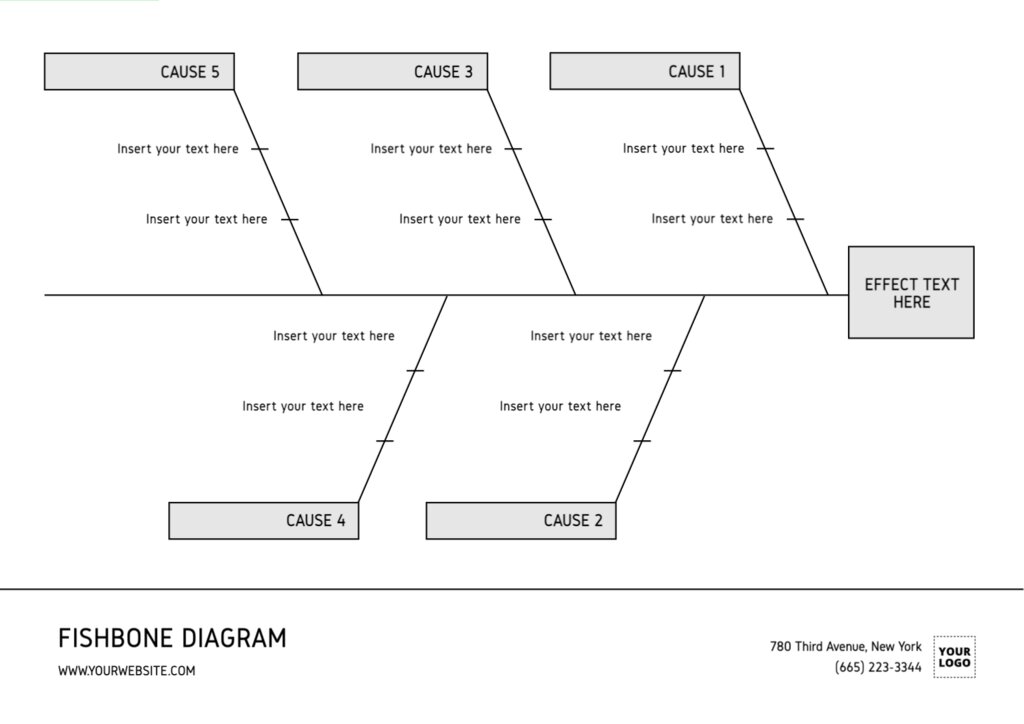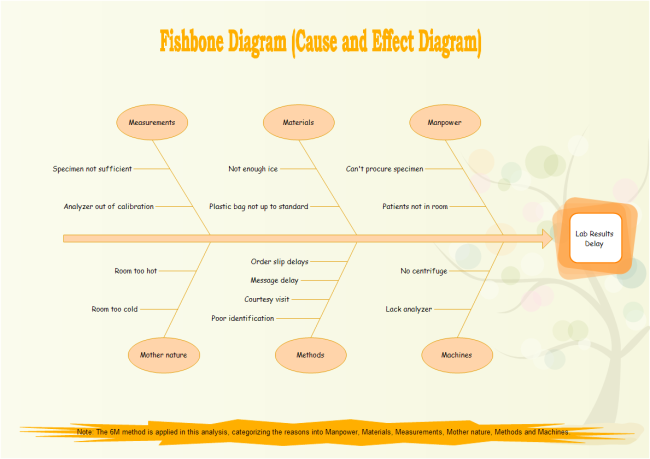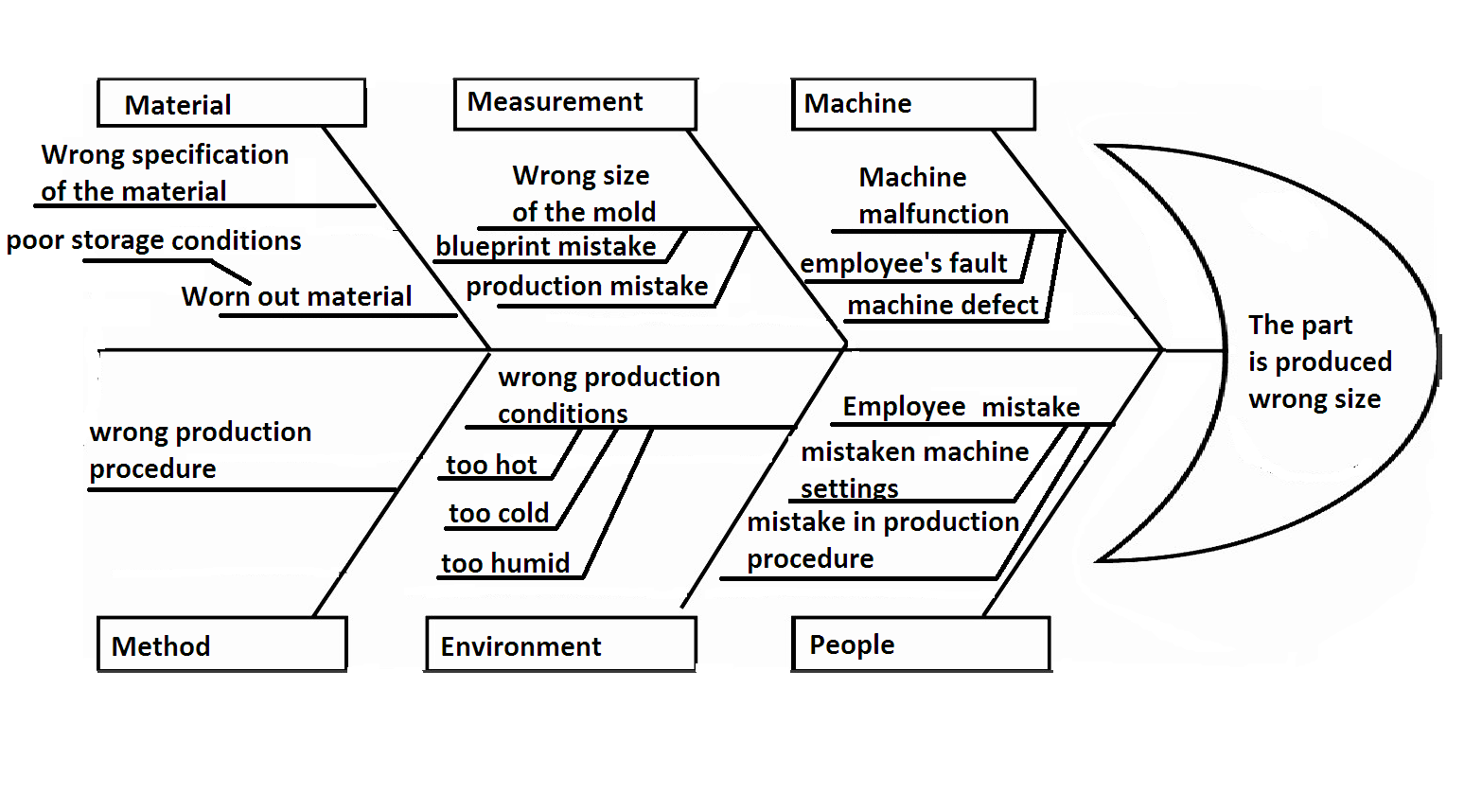

Measurements / Measurement system – in which it’s worth taking into account the incorrect or distorted indication of the measuring instrument.
#Ishikawa diagram method verification
Method – refers, among other things, to verification of procedures, instructions, specifications, standards, laws, rules, know-how and technology. Material – here we consider components at the entrance to the production process and semi-finished products that occur in the inter-operational areas (named also as WIP – work in progress). Machine – in this category, we verify all aspects relating to the machine, which include among others, license, durability, modernity, efficiency, precision, safety and working conditions. Man – in this category we verify qualifications, habits, job satisfaction, internship, well-being of the person or employee whose work led to the occurring problem. In the Ishikawa diagram, the most common are six categories that should be considered. Its additional advantage is that it can be used immediately when a problem occurs and where it occurs (often referred to in the automotive industry as “gemba”). Why are we mentioning this? Because the Ishikawa diagram strengthens teamwork, stimulating creative thinking. In the long run, this solution can lead to a reoccurrence of the problem and OEM client escalation. We must also remember that group problem-solving is a good practice, eliminating the pathology of the pseudo-one man show strategy. An additional benefit of using the Ishikawa diagram is that it is easy to learn and simple to use. 
It’s a great tool for the correct verification of the problem root cause, and thus, it determines its effectiveness. Kaizen methodology – with this approach, is used as 4M (Man, Machine, Method, Material) or 4M + 1D (Design).8D reports in step D4 – root cause analysis.Most often, we can deal with it when using:

Usually it’s used in the quality area, but it can also be successfully carried out in logistic, health and safety (ergonomics, accidents at work, etc.) and production analysis. Ishikawa Diagram, also known as the “fishbone”, is a qualitative tool that is often used during problem solving by the production plant.







 0 kommentar(er)
0 kommentar(er)
